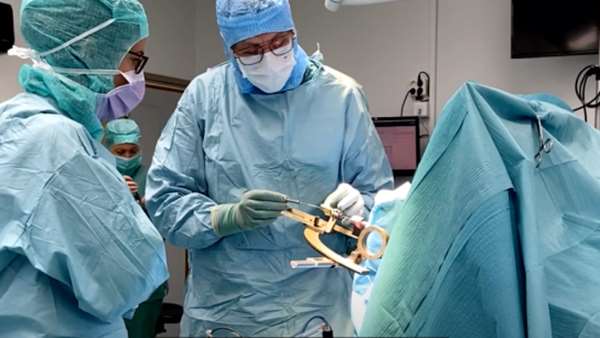On 13th of February, a transplant of stem cell-derived nerve cells was administered to a person with Parkinson’s at Skåne University Hospital, Sweden. The product has been developed by Lund University and it is now being tested in patients for the first time. The transplantation product is generated from embryonic stem cells and functions to replace the dopamine nerve cells which are lost in the parkinsonian brain. This patient was the first of eight with Parkinson’s disease who will receive the transplant.
“This is an important milestone on the road towards a cell therapy that can be used to treat patients with Parkinson’s disease. The transplantation has been completed as planned, and the correct location of the cell implant has been confirmed by a magnetic resonance imaging. Any potential effects of the STEM PD-product may take several years. The patient has been discharged from the hospital and evaluations will be conducted according to the study protocol,” says Gesine Paul-Visse, principal investigator for the STEM-PD clinical trial,consultant neurologist at Skåne University Hospital and adjunct professor at Lund University in Sweden.
There are around eight million people living with Parkinson’s disease globally; a disease which involves loss of dopamine nerve cells deep in the brain, leading to problems in controlling movement. The standard treatment for Parkinson’s disease are medications that replace the lost dopamine, but over time these medications often become less effective and cause side effects. As of today, there are no treatments that can repair the damaged structures within the brain or that can replace the nerve cells that are lost.
The STEM-PD trial is now testing a new investigational therapy aimed at replacing the lost dopamine cells with healthy ones manufactured from stem cells. The cell product that is being used has been subjected to rigorous pre-clinical tests, to meet the Swedish Medical Products Agency’s quality standards. After being transplanted, the cells are expected to mature into new and healthy dopamine producing nerve cells within the brain.
“With this trial, we hope to demonstrate that the cell product works as expected in patients. Over time, this creates the opportunity to help many more people with Parkinson’s in the future”, says Malin Parmar, professor at Lund University. She leads the STEM-PD team in close collaboration with colleagues at Skåne University Hospital, Cambridge University, Cambridge University Hospitals NHS Foundation Trust and Imperial College London.
“Further studies are required to move STEM-PD from this first in human trial all the way to a global treatment, and we have therefore worked in close collaboration with the pharmaceutical company Novo Nordisk A/S. Their input to the study, as well as operational and regulatory guidance, have been fundamentally important to initiate this first in human study and we look forward to future collaborations.”
A total of eight patients from Sweden and the UK will undergo transplantation at Skåne University Hospital, which has a long tradition of this type of surgery. In fact, the surgical instrument used in the current trial was developed by the university hospital for cell transplantation as early as the 1980s. At this time, stem cells were not available, and instead, neurosurgeons transplanted nerve cells derived from foetal tissue.
“The brain region that the cells are transplanted into in this trial can be as narrow as four millimetres. The surgical instrument has a very high level of precision, and we are greatly helped by modern imaging techniques” says consultant neurosurgeon Hjálmar Bjartmarz, who carried out the transplantation surgery.
The patients in the trial were diagnosed with Parkinson’s at least ten years ago and are at a moderate stage of their disease. The researchers will follow these patients closely and assessments of cell survival and potential effects will be conducted over the coming years.
No clinical data or results will be communicated until a sufficient amount of material from the clinical trial has been collected and analyzed, in adherence with health care confidentiality regulations.




ارسال به دوستان